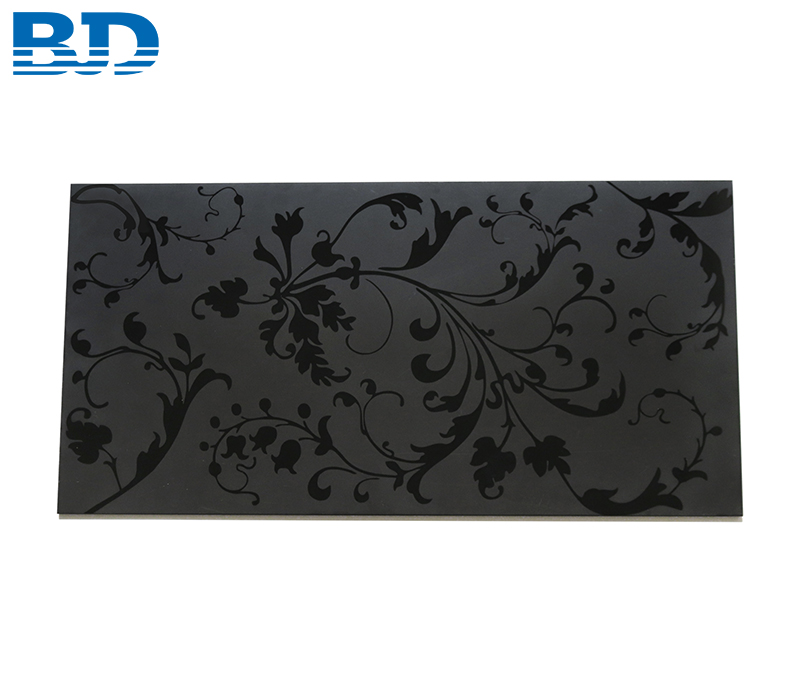It is known that it is standard equipment for kitchen decoration in Europe and the United States; with it, it not only makes cleaning after cooking easy, but also adds finishing touches and creates bright effects for the kitchen!
The "splash-proof plate" refers to the "wall in front of the kitchen stove" and can be extended to the sink and the preparation area (vegetable cutting area) as required. It was originally designed to reduce the adhesion of oil stains and facilitate cleaning. Therefore, it was pasted on the original cement wall or red brick wall, and then other easy-to-clean materials were pasted to achieve protection.
The current splash guard has been upgraded from a simple oil splash protection function to an important element to beautify the kitchen; whether it is colorful country style, elegant American style, or clean and warm Nordic style, modern minimalist style, can Use splash shields to create space highlights in your kitchen.
Splash plate material:
In the early years, most of the anti-splash panels were tiled, but with the evolution of decoration materials, designers can use more layout elements, such as tiles, mosaics, high-pressure laminates, tempered glass, etc., to further the overall space atmosphere. Inject eye-catching focus.
Bevel glass tile is the most common anti-splashing material. It is rich in style, easy to match and change, and relatively cheap; and because the surface is bright glazed, it is not easy to absorb oil stains and is less likely to be stained. However, the gaps between tiles can be a problem; if they are not cleaned in real time, they can easily become soiled.
It is recommended that if you worry about the gap becoming dirty and dirty, you may wish to put a transparent oil-proof sticker on the surface or reduce the gap between the gaps to achieve a visually seamless layout, which will also help reduce oil stains.
Advantages: heat resistance, high cost performance, many styles and colors, easy to match
Disadvantages: the gap is prone to dirt

Glass Splashback
Tempered glass:
This material should be the designer's favorite splash-proof board building material; glass splashback is not only fire-proof and oil-proof, but also there is no problem of gaps and jams. One wipe of rags and paper towels can greatly solve the homeowner's problem. Difficult, and there are many colors to choose from, easy to match the space style.
A small reminder, if you plan to install partitions and shelves on the glass, you should seek professional masters to handle and cut to avoid glass breakage.
Pros: Seamless and easy to clean
Disadvantages: can not be nailed, it is not easy to disassemble, and the whole piece needs to be replaced if it is damaged
Third, stainless steel
Durable, is a major feature of stainless steel, and like tempered glass, it is a seamless material, so it is relatively easy to clean, plus the advantages of heat resistance, cheap price, etc., it is also quite common; but it is not resistant , It is easy to appear dents under impact, and there is less variability in matching.
Small reminder: When cleaning the stainless steel splash plate, it is recommended to clean with a rag and sponge, and avoid using tools such as wire brushes, so as to avoid more and more scratches.
Advantages: durable, high temperature resistant, easy to clean
Disadvantages: afraid of scratching, relatively monotonous appearance
Fourth, mosaic
The effect is similar to tiles, even the disadvantages; but because of its small size, copper glass mosaic can have more changes in stitching and color matching, and design more patterns, which is conducive to creating the visual focus of the space and creating The effect of the kitchen atmosphere is more significant.
Small reminder: no matter you choose stone, ceramic or glass mosaic, it is recommended not to fill the gap with white cement or putty, so as not to turn yellow and affect the overall beauty; you can use a beauty sealer to make the gap smoother and smoother. easily.
Advantages: high temperature resistance, waterproof, changeable color and shape
Disadvantages: there are many gaps, and cleaning is more troublesome
Five, natural stone
In order to create a light and luxurious atmosphere, some kitchens will decorate splash panels with natural stone, such as marble and granite, and large pieces of stone can reduce the number of collages and naturally reduce the generation of gaps; however, the surface of natural stone is small. Fine holes, oil stains easily penetrate, cleaning and maintenance needs more care.
Tip: To avoid oil stains and dirt from sticking to the pores, it is recommended to stick transparent oil-proof stickers on the surface.
Advantages: light luxury, good texture
Disadvantages: high price, easy to hide dirt and pores
Six, quartz stone
It is an artificial stone; the material produced by mixing natural quartz crystal particles with resin has the hardness of quartz without the problem of stone porosity, and also has the characteristics of heat resistance and scratch resistance.
Small reminder: Although the cleaning and maintenance of quartz stone is relatively simple, but because of the high hardness, it is difficult to cut and shape, the construction is difficult, and the damage repair is more difficult. Avoid knocking on a daily basis.
Advantages: heat resistance, high hardness, easy to clean
Disadvantages: high price and difficult to repair